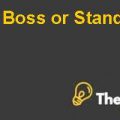
Common size Balance Sheet and statement for Y2006 to 2010. Interpret and discuss the profitability, income, liquidity, efficiency, solvency and expense trends for Ford motor. The weaknesses, strengths and conclusion.
The income statement of the company shows the following financial trends and practices of the company.
Income:
The revenues of the company have been substantially decreased in the financial year 2010 as compared to that of in the financial year 2006. However, the statement also shows that the revenues of the company have been decreasing continuously from the financial year 2006 to the financial year 2009, whereas, the revenues of the financial year 2010 show a bounce back as the revenues of the company have been increased in the financial year 2010 as compared to that of in the financial year 2009.
Thus, this depicts the efficiency of the top management of the company in carrying out the operations of the company more efficiently and more effectively.
Profitability:
The company has been incurring loss since the financial year 2006 to 2008. This depicts the inability of the top management of the company to control the overall costs of the company efficiently and effectively. In addition to this, the company also incurred a gross loss in the financial years 2006-2009, which depicts that the top management of the company is unable to control its over all manufacturing costs of the product.
However, in the financial year 2010, the company earned a gross profit which depicts the efficiency of the management to control its manufacturing costs efficiently and effectively.
Liquidity:
The balance sheet of the company shows that the total liabilities of the company have been decreasing over the period of five years, i.e. from the financial year 2006 to the financial year 2010. This acts as a strength for the company as the company is moving towards debt free balance sheet, which attracts the potential investors to invest in the company.
Expense Trends:
The overall expense of the company has been decreasing, which includes the operating expenses, interest expenses, and manufacturing expenses of the company. The overall expenses of the company have drastically decreased in the financial year 2010 as compared to 2006. This depicts the efficiency of the management of the company in controlling the overall costs of the company efficiently and effectively.
Explain the impact to FORD CONSOLIDATED CASH FLOW statement.
Upon analyzing the cash flow statement of the company, it is depicted that the cash reserves of the company havebeen substantially reduced in the financial year 2010 as compared to that of in the financial year 2006. This shows that the management of the company has lacked in maintaining its cash reserves efficiently and effectively over the period of 5 years. This poses a threat to the company that it might plunge into liquidity problems if appropriate steps in this regard are not taken by the top management of the company.
Explain the difference between US GAAP and IFRS accounting treatment for deferred taxes. Analyze the impact of deferred tax on the financial statement based on US GAAP and IFRS accounting practices.
Following are the differences between US GAAP and IFRS accounting treatment for deferred taxes.
Under U.S GAAP:
Under the framework of US GAAP, the tax basis of the company is strictly determined by the US tax laws, and the company is liable to strictly adhere to such laws while determining their tax basis. In addition to this, under US GAAP, there is no or very limited uncertainty with respect to tax basis of the company.
Under the framework of US GAAP, there is a separate criteria for the recognition of the tax benefits. Under this framework, the tax benefits of the company are recognized when there is a certainty of more than 50% that the tax benefit would be realized upon settlement.
The companies following IFRS recognize the whole tax asset of the company and then reduce the amount of tax asset by creating an allowance against the tax asset of the company. Such allowance is called valuation allowance, which is calculated on the basis of the amount that is not likely to be realized in the future.
Under IFRS:
Under the frame of IFRS (IAS 12), the management determines with the help of itsprofessional judgment whether the amount is taxable or deductible from the taxable income. There are no specific tax basis under IFRS. Thus, there is an uncertainty with respect to the tax basis of the company, under IFRS.
IFRS does not provide a specific framework for recognition for the amount of tax benefit. The company following IFRS measures the amount of tax benefit or liabilities on the basis of estimated amount that would be paid or received.
Companies following IFRS do not recognize the full amount of deferred tax asset, nor is there such concept of creating valuation allowance. The company recognizes the amount of deferred tax asset only to the amount that is probable to be realized..............
This is just a sample partial case solution. Please place the order on the website to order your own originally done case solution.








